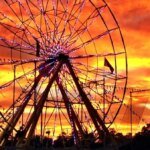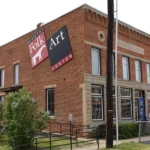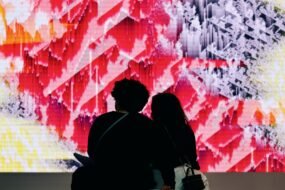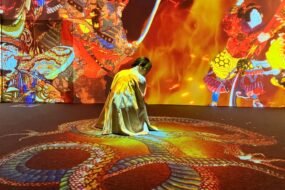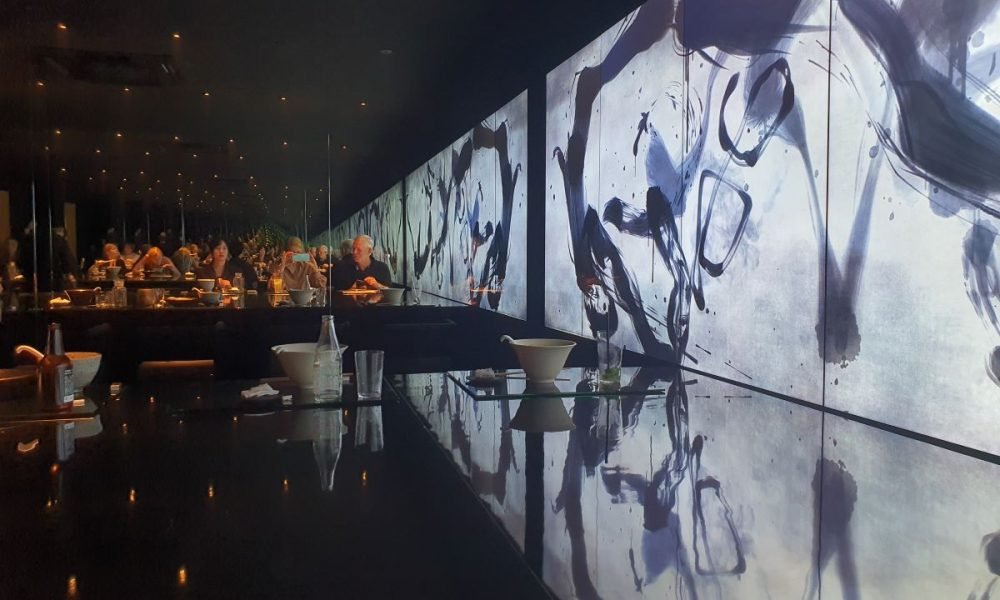
Kyotoー “We have run out of mountain herbs,” the waitress says apologetically. It is only 2 PM and Uzu, the Kyoto restaurant that only offers three types of ramen, has sold out its signature dish.
It is a tiny shop and as dark as a cinema when you walk in after the end of the commercials just before the movie starts. Like the movie theater, Uzu’s mission is to seat and feed its guests but to transport them into another world.
To achieve this, it has teamed up with digital art collective teamLab, the artists’ group behind the immensely popular Borderless and Planets digital art museums in Tokyo. The project sets out to blur the boundaries between food and art, plate and palate, analog and digital.
TeamLab often takes inspiration from Japanese motifs like calligraphy, woodblock prints, and changing seasons. With its dizzying tunnels of blossoming flowers, fluttering butterflies, and cascading waterfalls, teamLab’s projections have become such an international sensation that no visit to Tokyo seems complete without a stop and a selfie. But apart from enhancing your social media feed, could this onslaught of visual stimulation make your food taste better?
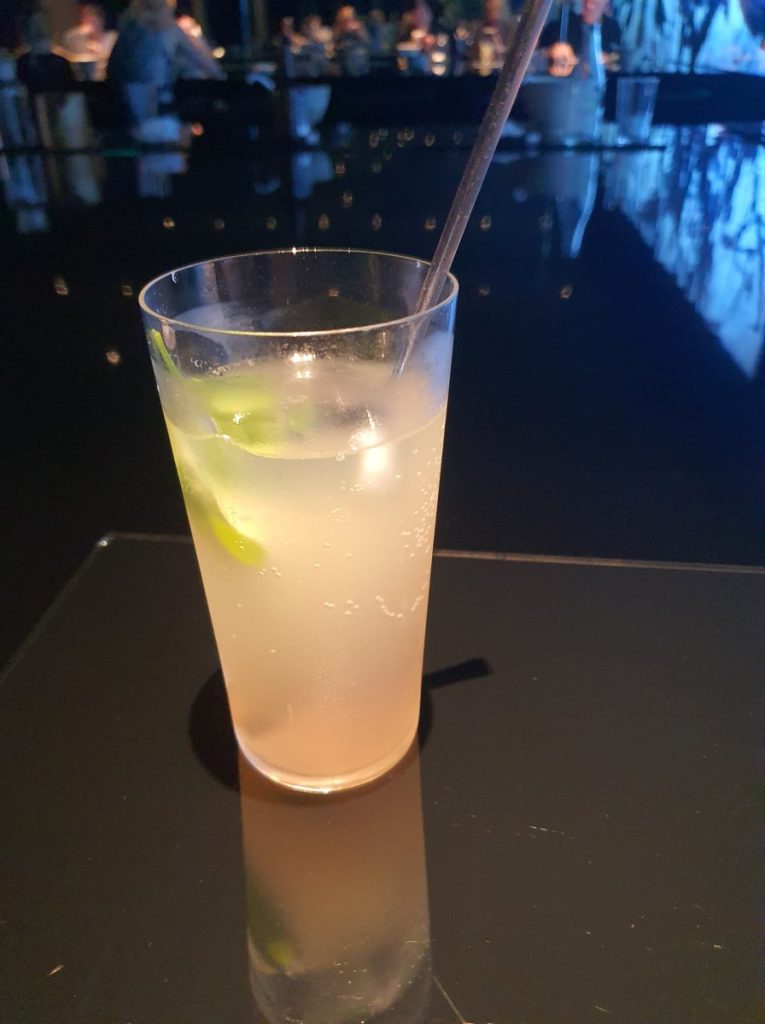

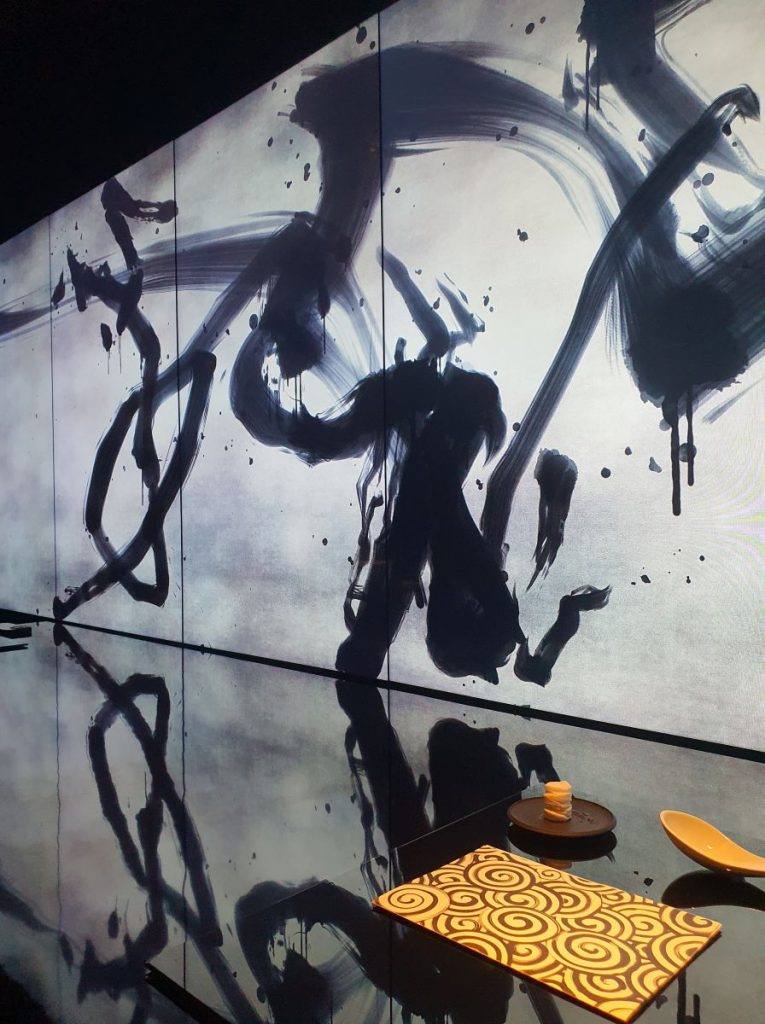

Immersive Experience
In Uzu’s narrow hallway, the receptionist gently dabs a few drops of essential oils on the wrists of the diners. After all, it is supposed to be an immersive experience. The oil smells of the eight wild mountain vegetables from Ohara, a village northeast of Kyoto, that the kitchen has sadly run out of today.
All 16 seats are placed around a jet-black, polished table that serves as a mirror. Spotlights in the ceiling illuminate the served food like performers on a stage. The mirrored table is complemented by mirrors behind the seats. In the dark, it reflects the faces of fellow diners and replicates the digital installation. The black and white artwork called “Reversible Rotations” looks like ink brush strokes spinning and moving over a white piece of paper.


Zen-like Atmosphere
The Zen-like atmosphere contrasts starkly with the no-nonsense environment eating normally associated with ramen. The “Reversible Rotations” projection accompanying the ramen experience is certainly less playful than teamLab’s crowd-pleasing sheets of LED lights or lamp forests. Yet, the darkness and meditative atmosphere can be slightly daunting.
This is definitely not the place to bring lively offspring or friends with loud, infectious laughter. Half the diners speak English, or rather whisper it because Uzu asks the guest to keep their voices low. Among the foreign tourists are also some Japanese guests trying out what might be Japan’s most aesthetically pleasing ramen shop.




Instagram Food
Uzu’s menu is small. It only serves three ramen options: soy sauce-based ramen, miso-based ramen, and tsukemen-style ramen. All of them are vegan.
The most popular choice by far is the highly instagramable miso type with herbs heaped on top. It looks like a flower arrangement in a jet-black ceramic bowl. Sensing the diner’s disappointment, the waitress proposes to bring the bowl of mountain herb ramen without the wild plants. After all, the kitchen has a heart.
Placed on the shiny table the ramen dish looks amazing. Still better, the taste lives up to the hype. It is wonderfully creamy and rich with a surprisingly punchy flavor. While vegan food can be bland and boring, Uzu’s ramen does not leave a feeling that something is amiss.
To achieve this culinary surprise Uzu uses kombu (sea kelp) from Rausu, a tiny fishing village in Northern Hokkaido, shiitake mushrooms, miso, oat milk, fermented chili paste, and certainly other ingredients it likes to keep an artistic secret. The noodles are firm and chewy, made with two different flours from Hokkaido and Miyazaki Prefecture. The dishes have earned Uzu a respectable entry in the Michelin food guide for good quality and good value cooking.


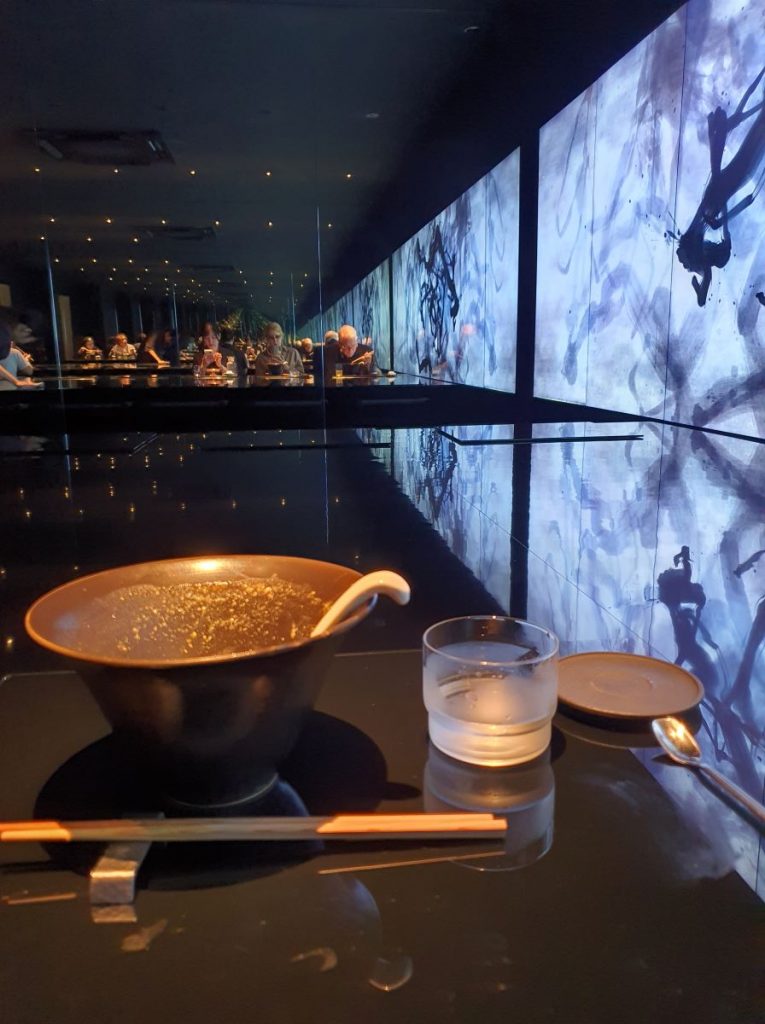

Whispering Encouraged
Tim, a visitor from Canada, is delighted to find vegetarian food and art combined. “It is nice to have such an option,” he says. The architect who works in Ottawa has come to dine solo.
Uzu does not allow children under the age of six onto its premises. Although Tim’s children are a bit older, he has decided it is best to leave his whole family behind in the hotel. As a collector of Japanese pottery, Tim also approves of Uzu’s ramen bowls. Regardless of the ceramic container, the wonderful ramen taste can stand on its own.
While Uzu’s Kyoto restaurant is certainly an adventure, some things remain rather inexplicable. Where exactly is the connection between the bowl of ramen and the art on display? Do the squishing lines and squiggles have a deeper meaning or are they just cultivating the “Only in Japan” experience people so much look for? Does the artwork really enhance the taste and make you appreciate the food more? Does Uzu really want you to come for lunch or dinner regularly? It is hard to tell.
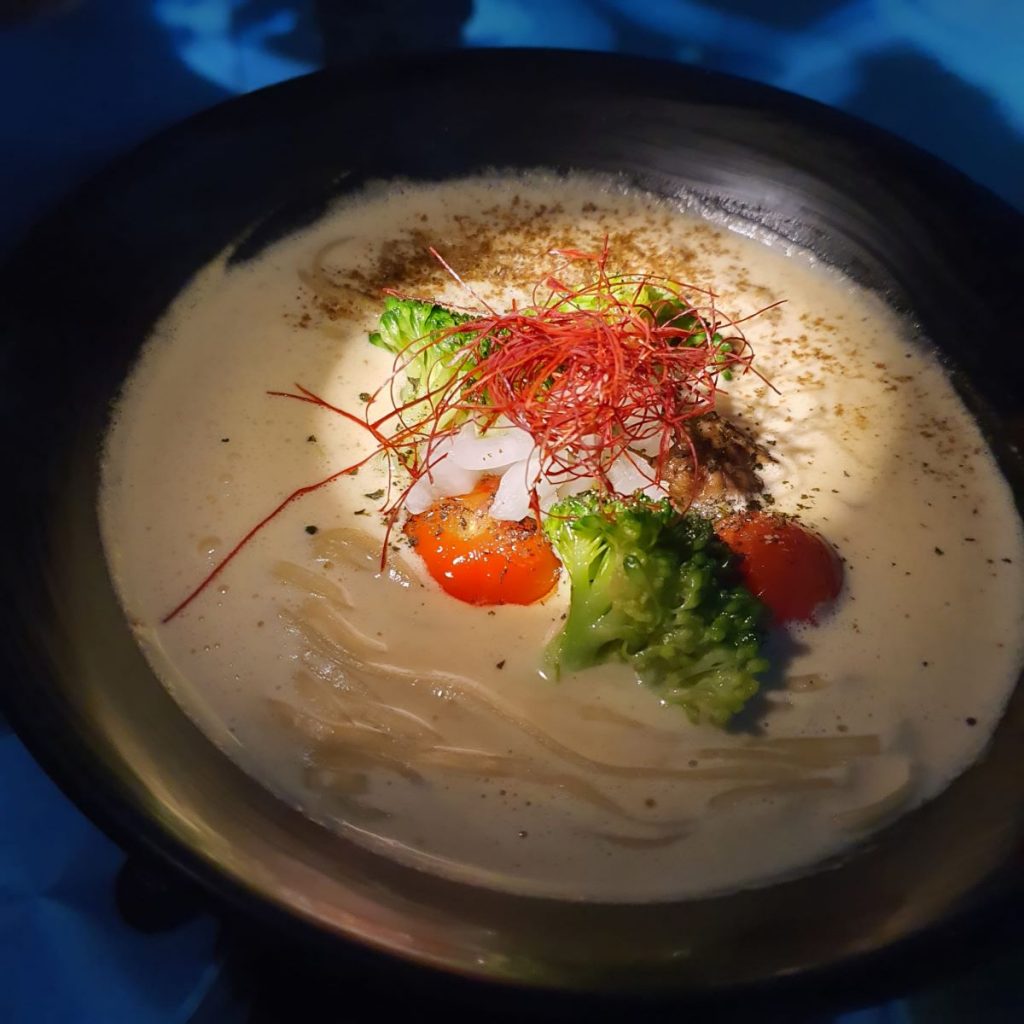

Try the Tokyo Branch
In a certain way, Uzu’s Tokyo branch might be the more convincing venue, simply because is a lot less pretentious. Instead of occupying an old townhouse, it is unceremoniously located in a multipurpose container next to the teamLab Planets museum in Odaiba.
It mainly caters to hungry and tired teamLab visitors who have walked through real water with projected carp, LED lights, and digital gardens for more than an hour. While the menu is slightly different from the Kyoto shop, the artwork and the concept are the same. Somehow, its provisional nature and connection to the teamLab exhibition make for a lighter, more fun experience.
People sit around the table talking about the exhibition and making plans for the rest of the day. It is just closer to the very nature of ramen eating. A nice, quick meal in an informal setting alone or with friends and colleagues without pretense or visible ambition.
After all, food and art are there to enjoy, not to worship.
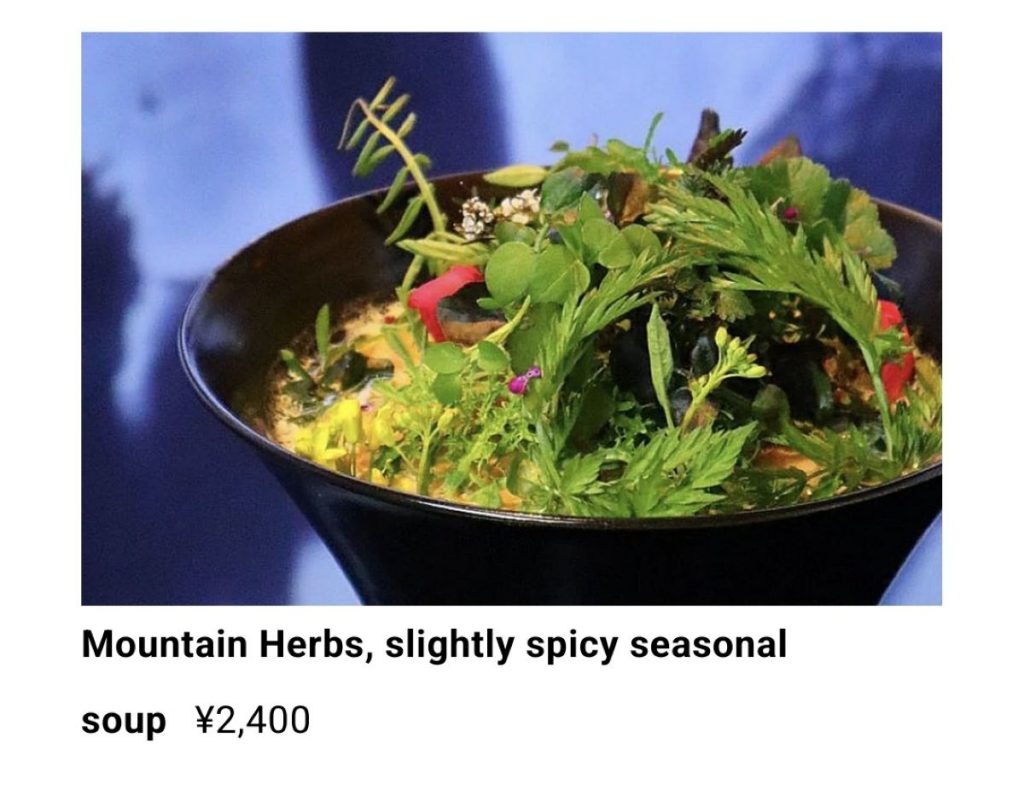

Finding Uzu
Follow the online instructions to find Uzu Kyoto.
In Tokyo, follow the “visit us” instructions for teamLab Planets or find a map on the Uzu Tokyo website.
RELATED:
Author: Agnes Tandler
Find other essays and articles by Agnes Tandler on JAPAN Forward.


